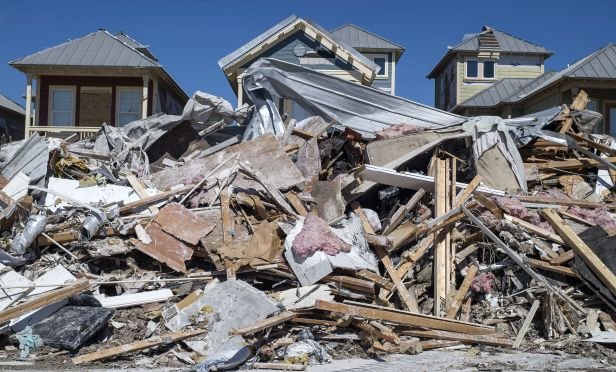 Debris and rubble are seen after Hurricane Michael hit in Mexico Beach, Florida, in Friday, Oct. 12, 2018. Search-and-rescue teams found at least one body in Mexico Beach, the ground-zero town nearly obliterated by Hurricane Michael.. (Photo: Zack Wittman/Bloomberg(
Debris and rubble are seen after Hurricane Michael hit in Mexico Beach, Florida, in Friday, Oct. 12, 2018. Search-and-rescue teams found at least one body in Mexico Beach, the ground-zero town nearly obliterated by Hurricane Michael.. (Photo: Zack Wittman/Bloomberg(
Developer Jeff Lamkin knew the risks when he paid $250 million for 63 acres of an island off the Texas coast. But he saw only upside in the quaint little beach town of Port Aransas.
Over the next 10 years he built Cinnamon Shore, a village of luxury vacation homes fortified by the latest hurricane-proof construction methods. Then Hurricane Harvey blasted ashore, leaving behind $125 billion of devastation along the Texas coast. It was the test every coastal investor dreads. But Cinnamon Shore passed with flying colors.
Recommended For You
Want to continue reading?
Become a Free PropertyCasualty360 Digital Reader
Your access to unlimited PropertyCasualty360 content isn’t changing.
Once you are an ALM digital member, you’ll receive:
- Breaking insurance news and analysis, on-site and via our newsletters and custom alerts
- Weekly Insurance Speak podcast featuring exclusive interviews with industry leaders
- Educational webcasts, white papers, and ebooks from industry thought leaders
- Critical converage of the employee benefits and financial advisory markets on our other ALM sites, BenefitsPRO and ThinkAdvisor
Already have an account? Sign In Now
© 2025 ALM Global, LLC, All Rights Reserved. Request academic re-use from www.copyright.com. All other uses, submit a request to [email protected]. For more information visit Asset & Logo Licensing.








